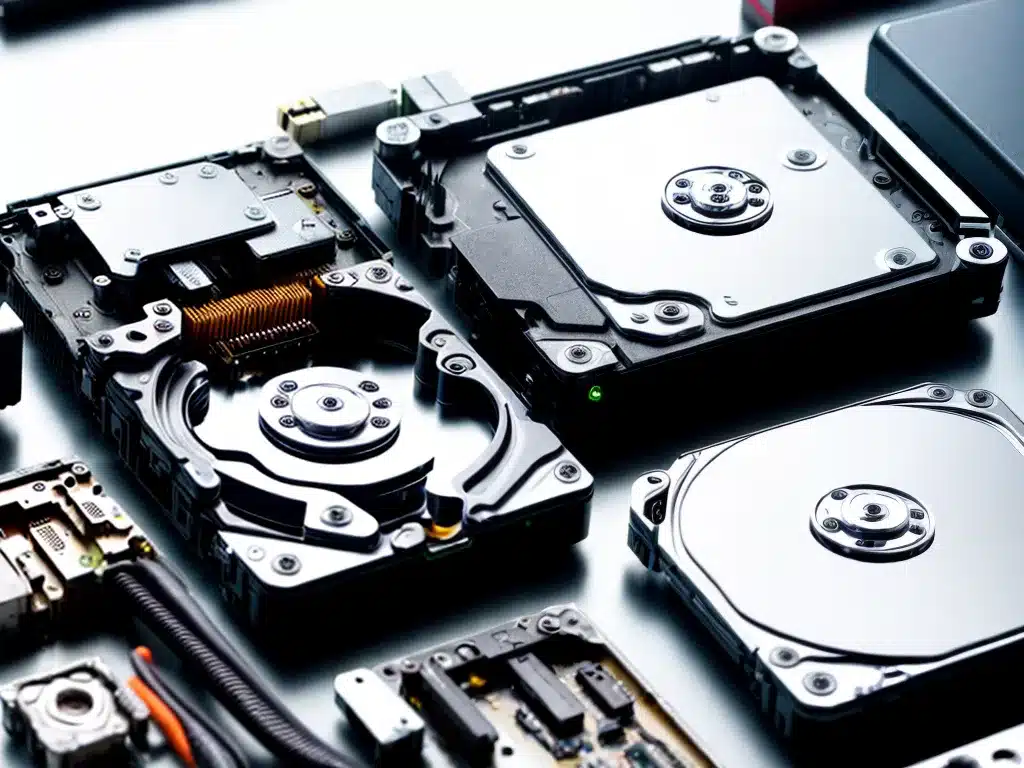
Losing access to your data because your computer won’t start can be incredibly frustrating. As someone who has experienced this myself, I know how disheartening it feels to have important files and information trapped inside a non-functional machine.
The good news is, there are still options for recovering your data even if your computer refuses to boot up properly. With the right tools and techniques, you can regain access to your photos, documents, and other files.
Diagnosing the Issue
The first step is to diagnose why your computer fails to start up. There are several common causes:
Hardware Failure
Hardware components like the hard drive, motherboard, CPU, or RAM could be malfunctioning. This prevents your computer from completing the boot process. The solution here is to replace the faulty hardware.
Corrupted Operating System
Errors in system files like the registry, boot configuration data, or master boot record could prevent startup. You’ll need bootable media to access and repair the OS.
Bad Software Update or Installation
A buggy app, driver, or OS update can sometimes damage critical system components needed for booting. Startup repair utilities can revert these changes.
Pinpointing the exact failure is crucial for choosing the optimal data recovery method.
Recovery Options When Computer Won’t Start
With the issue diagnosed, you can select from various data recovery tactics:
Remove the Hard Drive
Physically removing the hard drive and connecting it to another working computer as a secondary drive allows access to read the data. This straightforward approach works if the hard drive itself is healthy.
You’ll need another computer, SATA/IDE to USB adapter, and cables. I’ve used this method successfully several times to recover data from non-booting machines.
Bootable Media
Bootable USB flash drives or discs let you boot into a separate operating system to access the hard drive. Hiren’s Boot CD and Ubuntu live USB are two excellent options.
This is ideal when the computer fails to boot due to software or OS issues. The boot environment circumvents the damaged components.
Data Recovery Software
Specialized data recovery programs can read drives and reconstruct deleted or corrupt files. Applications like Disk Drill have advanced file recovery algorithms.
This is the method to use when hardware components like the drive itself are malfunctioning or damaged. The software can extract data despite physical errors.
Best Practices to Avoid Data Loss
While the above techniques can recover data from a dead PC, prevention is always better than cure. Follow these tips to avoid such scenarios:
-
Back up regularly – Maintain recent copies of essential data on external drives or cloud storage. This gives you copies if the internal drive fails.
-
Make a recovery drive – Create a bootable USB or DVD you can use if Windows crashes. The Windows Media Creation Tool can generate these drives.
-
Update cautiously – Don’t blindly install every available update. Instead, research known bugs and compatibilities before applying updates.
-
Monitor drive health – Use utilities like CrystalDiskInfo to check SSD/HDD status and get early warnings of potential failure.
-
Control drive usage – Excessive drive fragmentation and very full capacity can increase failures. Defragment regularly and delete unneeded data.
When All Else Fails, Seek Professional Recovery
For difficult cases beyond DIY methods, you can turn to professional data recovery services. Experts have specialized tools and dust-free cleanrooms to extract data from severely damaged drives.
The costs range from $300 to $3000, depending on drive size and damage extent. While expensive, this option is the last resort to recover truly critical files.
Just be sure to avoid further drive contamination and damage before shipping it off. Also research vendors’ credibility and capabilities beforehand.
Final Thoughts
While an unbootable computer and inaccessible drive can seem like a nightmare, there are almost always ways to get your precious data back with the right approach. Identify the underlying issue, pick an appropriate recovery method, and avoid common pitfalls like continued drive usage.
With the techniques outlined in this guide, you can regain access to important documents, photos, and files – even if your computer stubbornly refuses to start. Just stay calm, be patient, and keep trying different options. Data recovery is often possible with some diligent effort.












